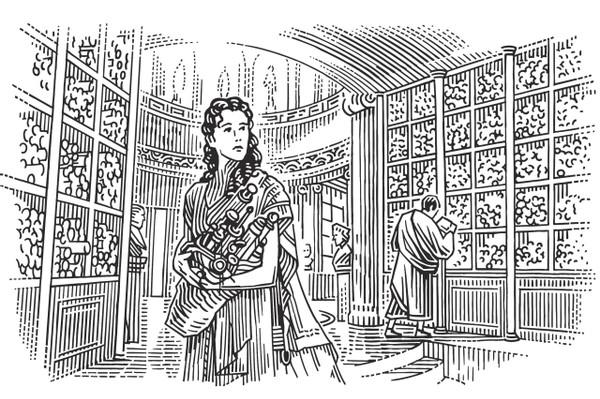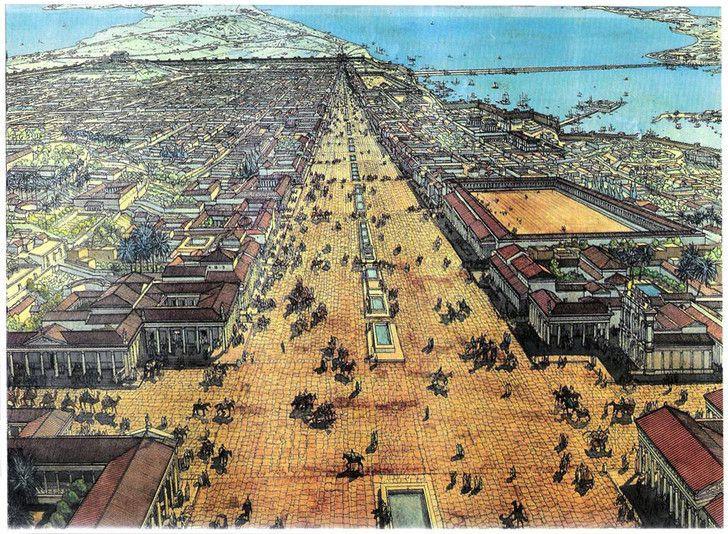Explore the World's Best Ideas
Join today and uncover 100+ curated journeys from 50+ topics. Unlock access to our mobile app with extensive features.
Alexandria during the third and second centuries BCE
Alexandria, with its Great Library, was marked as the intellectual capital of the world.
During the third century BCE, the Musaeum, an educational and research institution, was built in Alexandria. The Great Library was one part of the Musaeum and may have held around 700,000 scrolls (equivalent to over 100,000 printed books.)
152
1.82K reads
The start of the city Alexandria
Alexandria was founded in 331BCE by the Macedonian leader Alexander the Great. Alexander left Egypt a few months later, leaving his viceroy Cleomenes in charge.
Alexander passed away in 323 BCE, and one of his deputies, Macedonian general Ptolemy Lagides, took control of Egypt. Ptolemy executed Cleomenes and declared himself pharaoh. He started the Ptolemaic dynasty and made Alexandria his capital in 305 BCE.
131
1.25K reads
Alexandria: A cosmopolitan city
The city's population grew to around 300,000 people. It remained the capital of Ptolemaic Egypt, as well as Roman and Byzantine Egypt, for almost a thousand years.
Alexandria was designed by the architect Dinocrates of Rhodes, using a Hippodamian gridiron street plan. The city was cosmopolitan and diverse. It consisted of Greeks, Jew, and Egyptian Arabs.
132
1.15K reads
The Musaeum and Library of Alexandria
The Musaeum, or "shrine of the Muses," from where we get the word museum, included a lengthy roofed walkway and a large communal dining hall, where scholars dined and shared ideas. The scholars were salaried employees, received free room and board, and paid no taxes.
The Musaeum contained exhibit halls, private study rooms, lecture halls, residential quarters for scholars, and theatres. The Great Library held shelves upon shelves of papyrus scrolls and was envisioned as a universal library that would contain all the world's written knowledge.
137
993 reads
Alexandria pioneered the universal library
The idea of a universal library proved to be a game-changer. Alexandria inspired other cities to create rival "universal libraries," such as the Library of Pergamum in today's Turkey.
The Great Library's main structure was likely burned in 48BCE when Ptolemy XIII laid a siege against his wife and co-ruler Cleopatra and her lover, the Roman dictator Julius Caesar. The smaller library building in the Serapeum temple, which was added when the first library ran out of space, may have survived until the 4th century when the Byzantine Emperor Theodosius I ordered all pagan temples to be destroyed.
137
971 reads
IDEAS CURATED BY
Paige 's ideas are part of this journey:
Learn more about history with this collection
The historical significance of urban centers
The impact of cultural and technological advances
The role of urban centers in shaping society
Related collections
Similar ideas
8 ideas
8 Legendary Ancient Libraries
history.com
7 ideas
Centers of Progress: Paris (Enlightenment)
humanprogress.org
6 ideas
How we deciphered Ancient Egyptian hieroglyphs
sciencefocus.com
Read & Learn
20x Faster
without
deepstash
with
deepstash
with
deepstash
Personalized microlearning
—
100+ Learning Journeys
—
Access to 200,000+ ideas
—
Access to the mobile app
—
Unlimited idea saving
—
—
Unlimited history
—
—
Unlimited listening to ideas
—
—
Downloading & offline access
—
—
Supercharge your mind with one idea per day
Enter your email and spend 1 minute every day to learn something new.
I agree to receive email updates



